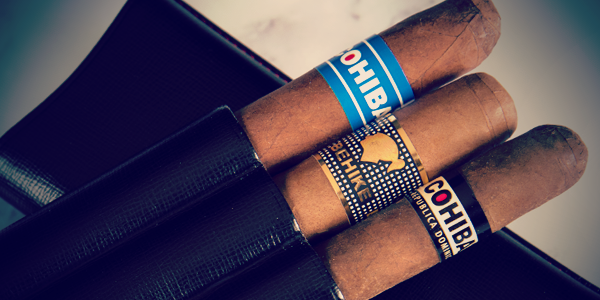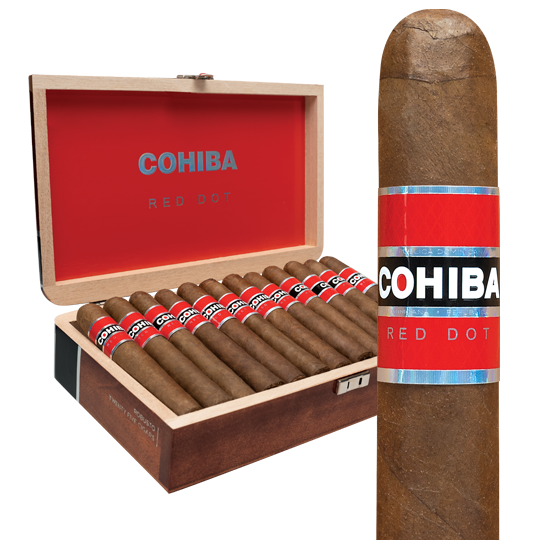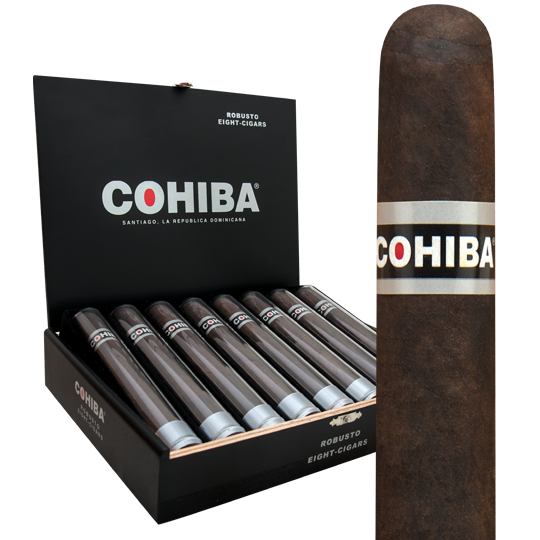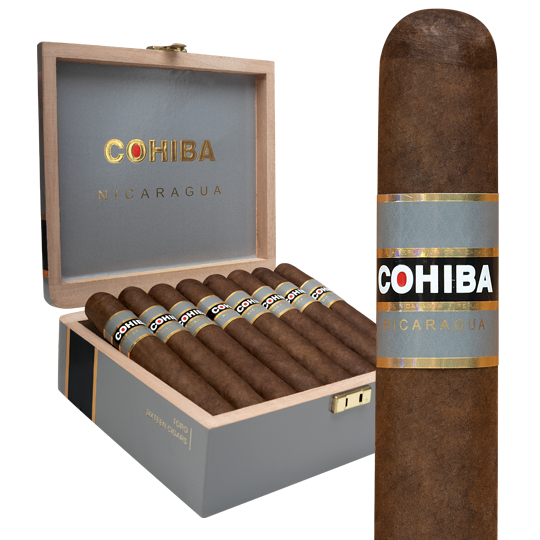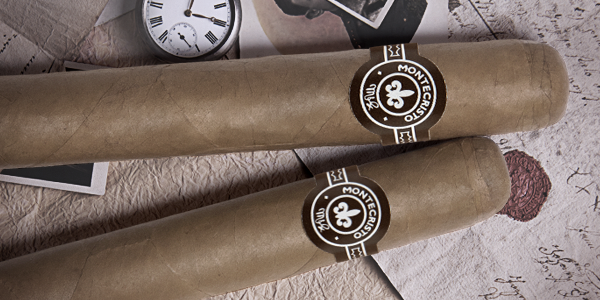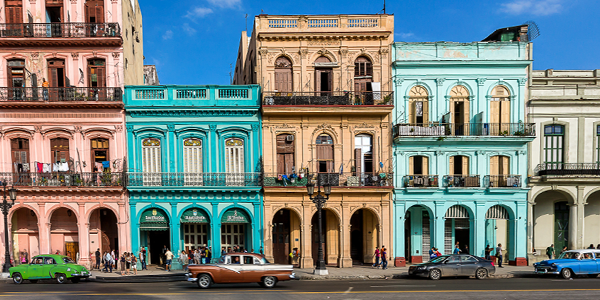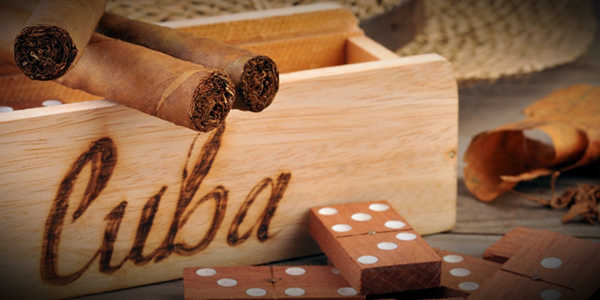Top 5 Best Cohiba Cigars
Let’s make one thing clear. There are two cigars called Cohiba. One is Cuban, the other one Dominican. There’s a huge legal battle that’s been raging for years, but we’re not getting into that. Our goal here is to differentiate the characteristics between the two Cohibas. I’m going to start doing that while enjoying a very nice Cuban Cohiba Robusto, perhaps the most consistently well-made shape in the Cuban Cohiba portfolio and certainly a favorite of aficionados over the years.
Cohiba Cigar History
The word “cohiba” is the Taino word for tobacco. The Taino are the indigenous tribe Columbus found in Cuba when he “discovered” it and they are featured in gold silhouette on the cigar’s band. Fidel Castro attributed the word “cohiba” to the name of this special cigar after he was introduced to it in 1966. The cigar had originally been made as a personal blend for one of Castro’s bodyguards who shared it with the comandante. Castro made Cohiba the exclusive cigar of the Cuban Communist party, available only to high-level government officials and diplomats until 1982. The first Cohiba was a Panatela, a cigar now crafted at 4 1/2 inches by a 26 ring gauge and part of the Linea Clasica (the Classic Line). The Cohiba is a top seller for Cuba and so generally gets the best tobacco, but it still occasionally suffers from questionable construction resulting in a tight draw.
The non-Cuban Cohiba is a brand that was originally registered by General Cigar Company in the United States in 1978. The “red dot Cohiba,” as it’s now commonly known due to an early band design, began selling in the 1980s. Now, while the two cigars share a name, there are significant differences in their flavors and strengths and the non-Cuban version has more variety in the kinds of tobacco being used. Here are some apples-and-oranges assessments of the two.
The Top Cohiba Cigars: Cuban vs. Dominican
#1 - Cuban Cohiba Esplendido vs. Dominican Cohiba Churchill
I favor the larger ring gauges in the Cuban Cohiba. About as thin as I like to go is the Esplendido, a Churchill, 7 x 47, that generally has a medium-full flavor profile and lately has been considered the best Cohiba. That was not always the case with this vitola (shape). It’s among the most knocked off of all Cohiba cigars, but the real ones reflect the old leather, fruit and coffee notes that makes this a complex and smooth smoke. It sells for more than $60 per cigar in London. You might find Cuban Cohibas for a bit less in Mexico.
The Dominican Cohiba Churchill, 7 x 49, is one of the top five Cohibas from that country, but it is a medium-strength cigar with lots of cedar notes and a finish that is a bit drier than the Cuban version. This one has a delicious Cameroon wrapper with Dominican filler and sells for about $20.
#2 - Cuban Cohiba Robusto vs. Cohiba Nicaragua N45
Without a doubt, the classic Cuban Cohiba Robusto is one of my favorite in the brand. It consistently scores highly in tastings and has been a reliable shape at 4 7/8 x 50. The one I smoked most recently was lighter than the Esplendido, more in the medium range, very creamy and almost perfumed at times. The price in London is around $45.
The best Cohiba, non-Cuban, I would put up against the classic Cuban version is the either the smaller Cohiba Nicaragua N45 or the larger N54. I think the larger one, verging into Corona Gorda territory, is a good choice at 5 1/2 inches and a medium-full profile that comes largely from an oily, reddish Nicaraguan Oscuro wrapper with Nicaraguan filler. This cigar burns beautifully. It sells for about $15.
#3 - Cuban Cohiba Behike 52 vs. Cohiba Nicaragua 60
The Cuban Cohiba Behike 52, a chubby Robusto that is 4 3/4-inches long, is better, I think, than the Behike 54 or 56, and is among the most sought-after shapes in the line. It’s got a pigtail cap and is a medium-bodied smoke with strong notes of wood and a pronounced sweetness. Different from others is the complex medio tiempo tobacco, from the top two leaves of the plant, used here. This one sells for around $35 in London, though it’s more like $22 in Cuba if you happen to be going. Hard to find!
On the non-Cuban side, it’s time to go big. Get your lips around the Cohiba Nicaragua 60, a 6 x 60 shape. This medium-full Grande is rustic, and maybe a bit dry, but has some floral notes as well. It’s a cigar that will keep you busy and happy for quite a while at about $16.
#4 - Cuban Cohiba Siglo VI vs. Cohiba Crystal Corona
The Siglo VI is a Cuban Cohiba that calls for a treasure map. It’s a very popular Corona Gorda and very good. This Cohiba, I would say, is in the medium range of strength and very nutty and sugary at times. It’s not cheap and I found exactly one on a recent trip to Spain, where it sells for about $20. In London, maybe around $45, if you find a clearance sale.
The Dominican I like here is the Cohiba Crystal Corona, among my favorite shapes. It’s 5 1/2 x 42 and is very easy to smoke any time of the day. I tasted some woody smoke and pepper here and a little tartness. Medium body at about $18 in a tube.
#5 - Cuban Cohiba Medio Siglo vs. Cohiba Black Robusto
Lately, I’ve been pressed for time and have found the Cuban Cohiba Medio Siglo, a 4 x 52 cigar, to be substantially complex and satisfying. This cigar fully confirms my view that the larger ring gauges smoke better. The Medio Siglo draws nicely and has some pepper with a lot of creaminess. It sells for roughly $40 in London.
If I want something non-Cuban in a Cohiba along the lines of the Medio Siglo, I go to the Cohiba Black line. The Robusto here sells for about $18, and has a gorgeous, dark Connecticut Broadleaf Maduro wrapper containing Dominican and Mexican fillers. Sweet notes of cocoa, coffee and a lot of earthiness abound all day!

